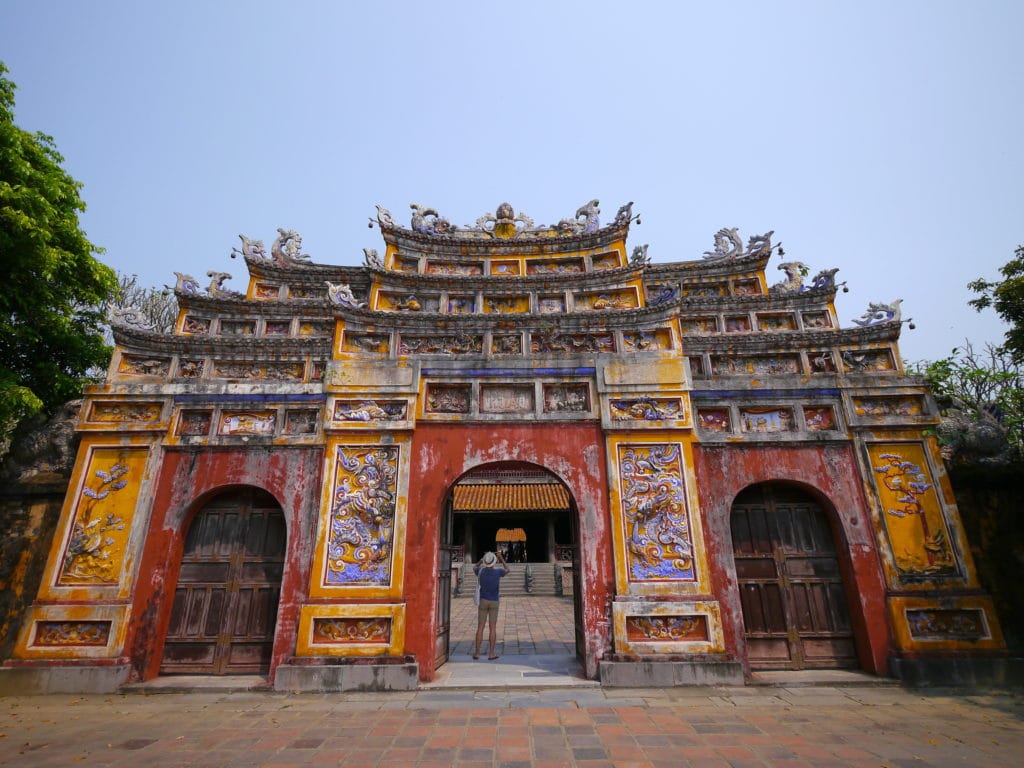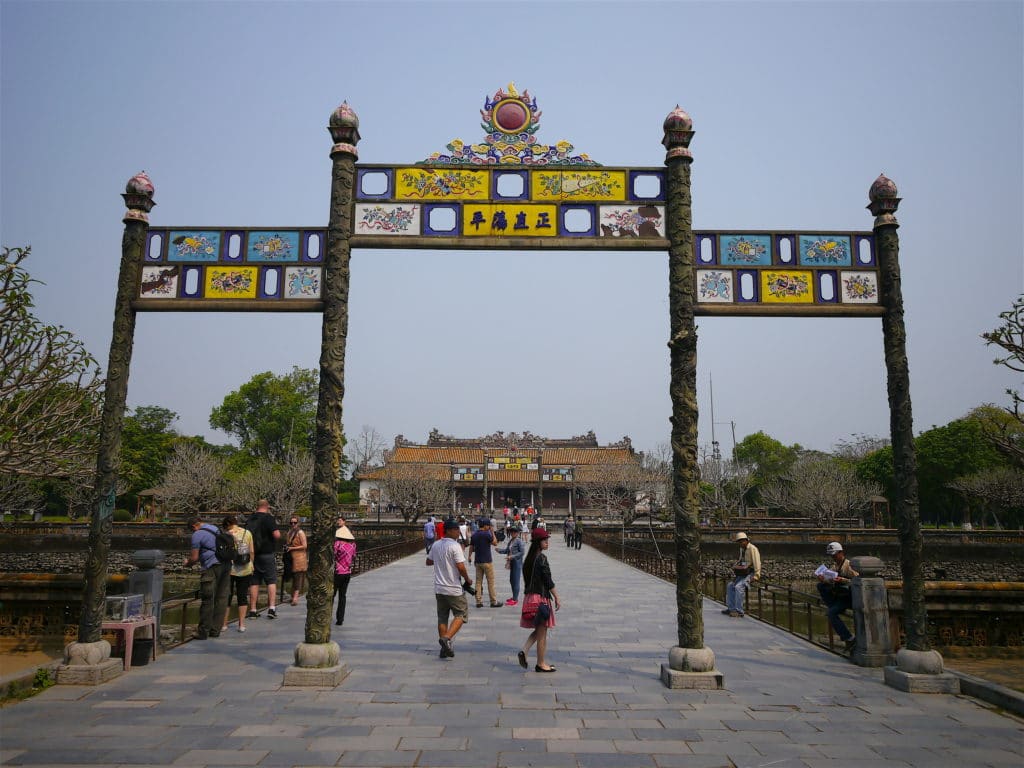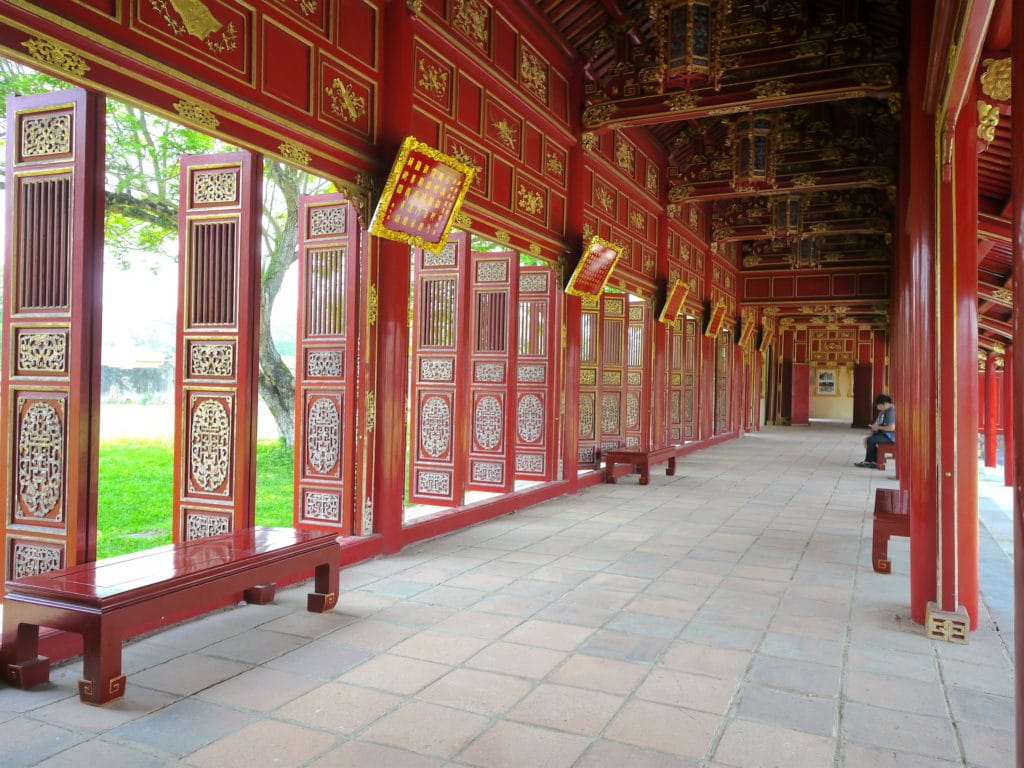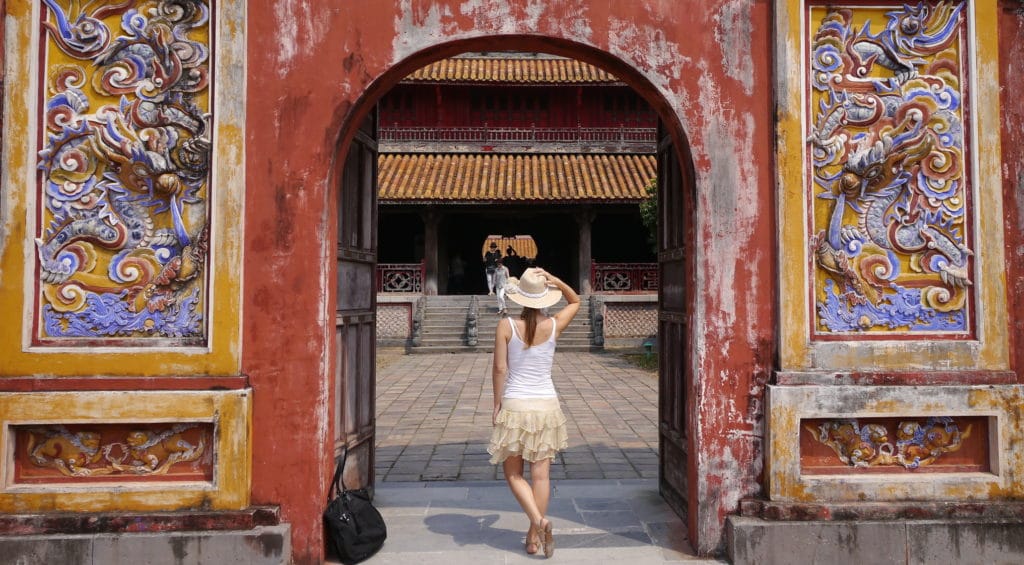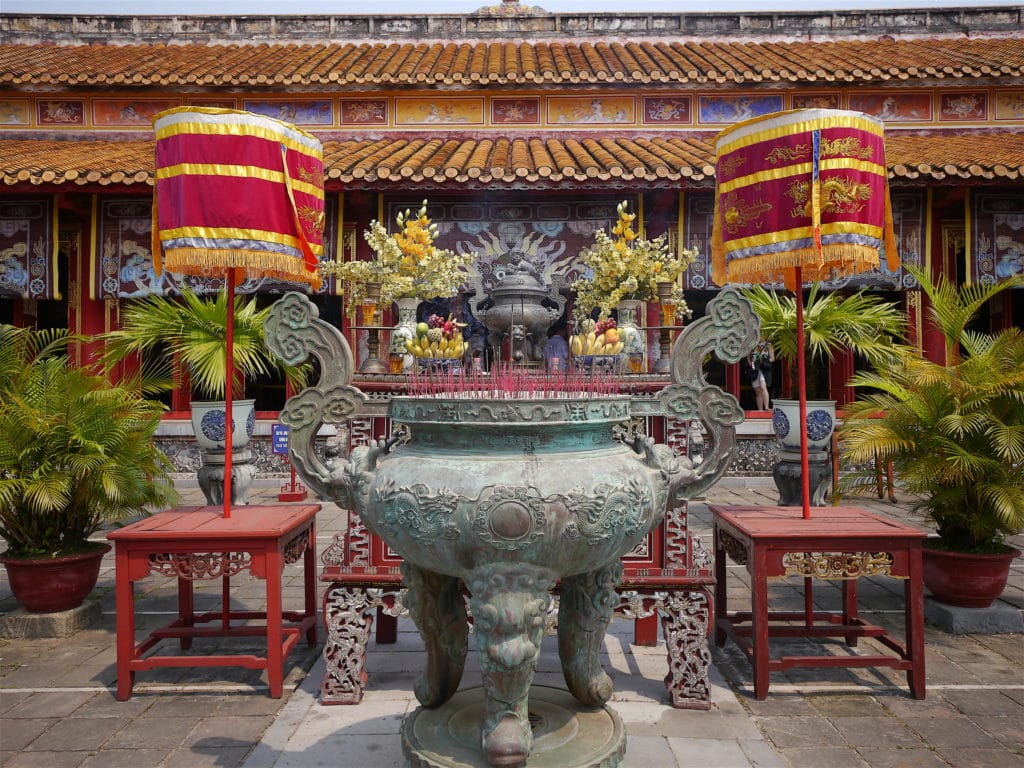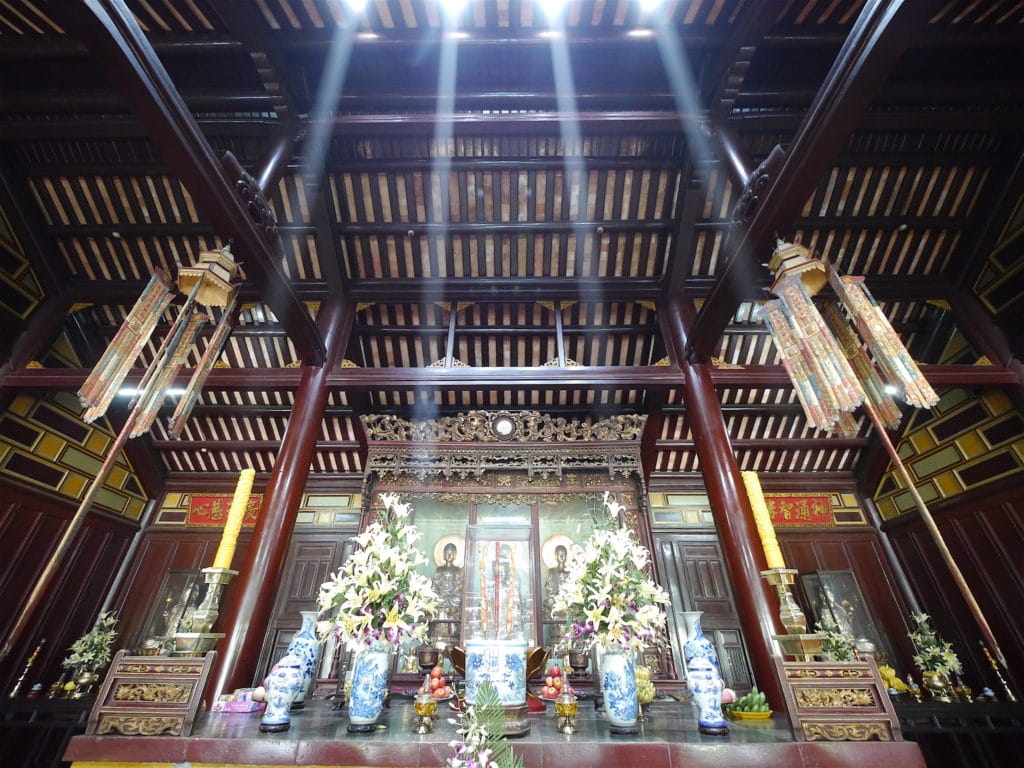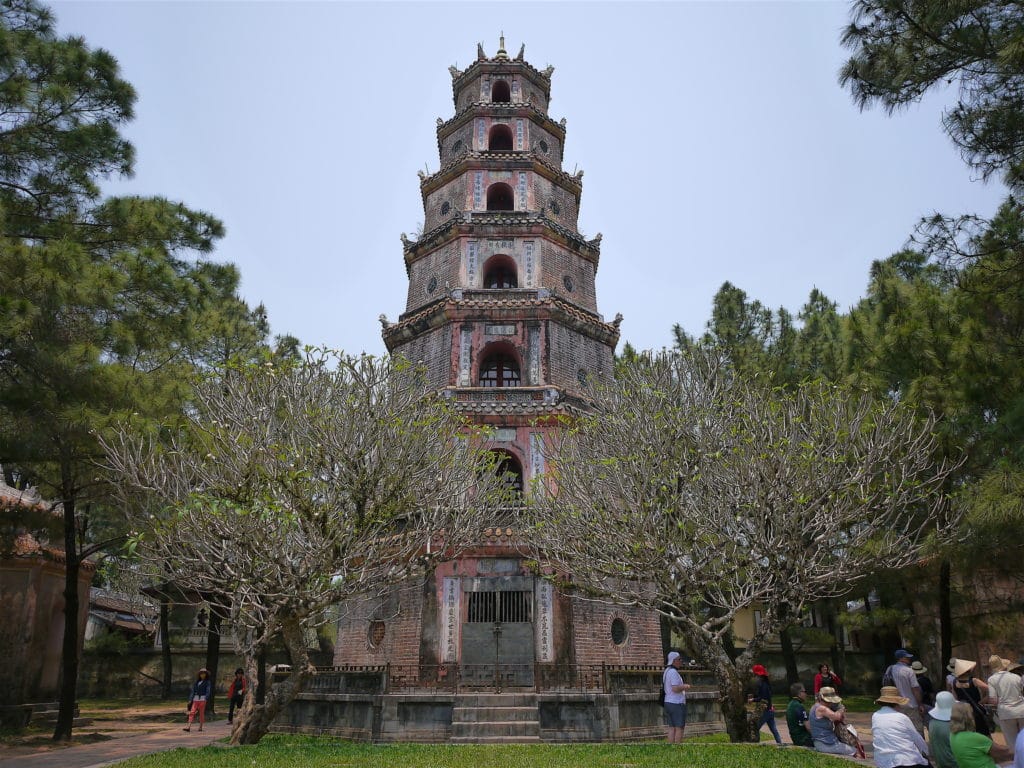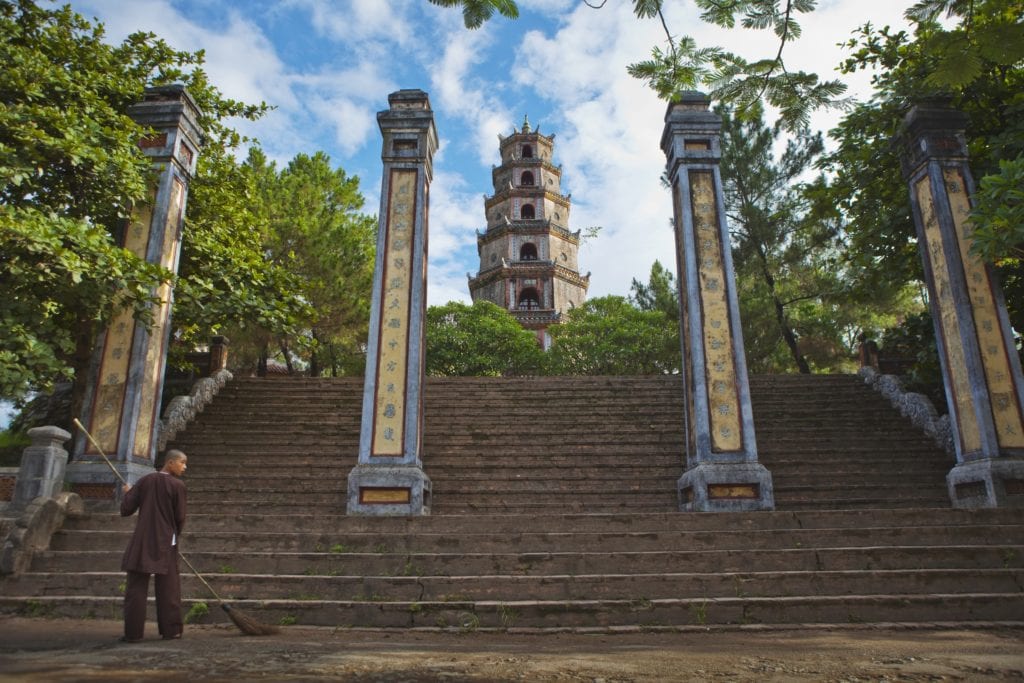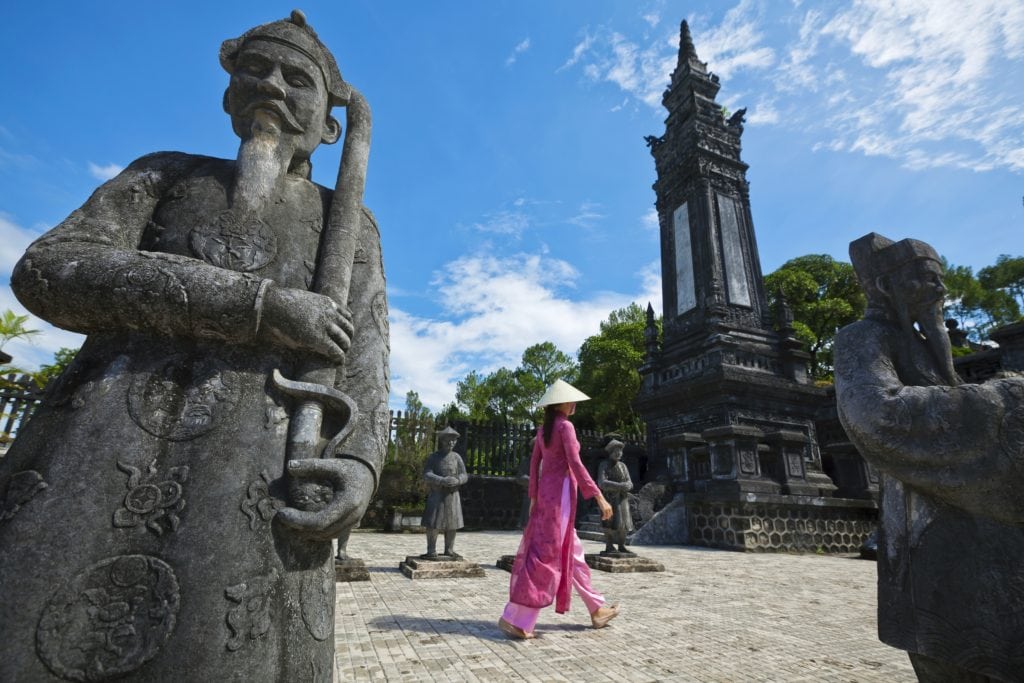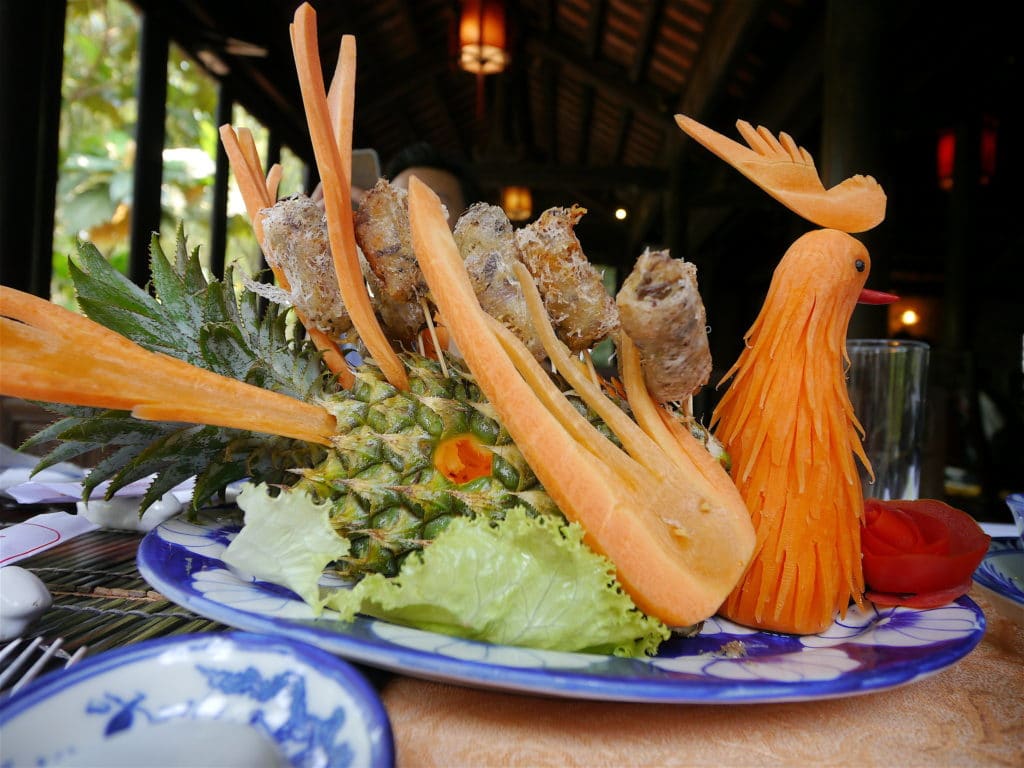Visiting Hue is getting an insight into the life and death of the Nguyen Dynasty. This very popular Vietnamese surname is synonymous with the rise and fall of the Vietnamese Empire, before the communist rule took over the country in the middle of the 20th century.
For 150 years approximately, the Nguyen ruled over Southern Vietnam and made Hue their Imperial Capital. There are lots of things to see in Hue, but the most relevant sight is the Imperial City, in the center of town, by the Perfume River. This is where the Emperor and his family and concubines lived.
It was fashioned like the Forbidden City in Beijing and structured as a series of protective walls separating the Palace from the outside city.
A brief introduction to the Nguyen Dynasty and Vietnam’s history
During the Nguyen Dynasty, Vietnam was a feudal system. The Emperors had concubines and eunuchs and lived removed from the day to day life of their people. The name Vietnam was first coined by Gia Long, the first Emperor in the Nguyen Dynasty who ascended to the throne after defeating the Tay Son Dynasty in 1802.
If you visit this part of Central Vietnam, Hoi An or even Halong Bay on a cruise, Chinese influence is clear. It was Gia Long’s son, Minh Mang who claimed the Han (Chinese) influence in Vietnam and brought Confucianism to the country.
This was also the time when Chinese clothing arrived in Vietnam. He also, finally, conquered the territory occupied by the Champa, in Central Vietnam, as seen in My Son’s ruins, he discriminated against other minorities like the Cambodians or Khmer and denied Catholicism.
During his reign there were lots of revolts and efforts aimed at restoring Catholicism to which Napoleon III finally reacted with the excuse of saving imprisoned Catholic priests who had entered the country illegally in 1858. By 1861 France had completed a full invasion.
After the first French war Vietnam gave away three provinces in the south which are famously known as the far-flung Cochinchina. The invasion also gave France three trading ports, freedom to the Catholic missionaries and money to pay for the cost of war.
Further French occupation ended in 1887 when the country’s language was translated into Latin characters using the Portuguese spelling from a dictionary left by a Portuguese missionary. Catholicism was also instated officially at that time.
During World War I, France leveraged the wealth of Indochine to support the cost of war. This caused famine and death in Vietnam as the country was depleted of its resources and natural disasters stroke between 1914 and 1917. But no independence movement managed to overthrow the French.
With the break of World War II, Vietnam was invaded by the Japanese who wanted to build bases to defend from Allied Forces in Southeast Asia.
When WWII ended with the surrender of Japan, the nationalistic movement headed by Ho Chi Minh recovered power and forced the then Nguyen Emperor to abdicate and hand over power to the Vietmihn. He retired in Hong Kong and became a counselor to the government.
But the French then returned and fought the second Indochine war against the Vietmihn. In 1948, they asked the former Emperor, Bao Dai to return as Supreme Head of State under French rule. But eventually, the French lost the war in 1954 and divided the country into North and South.
The Northern part was given to Vietmihn and the Southern went to a new government initially headed by Bao Dai but he was overthrown by his prime Minister and went into exile in France. This ended the Nguyen Dynasty’s power, but the family still continued as Head of the Imperial House of Vietnam, living in France and Vietnam.
Imperial City
Hue’s most relevant sight is the Imperial City. You can spend an entire day wandering the property, the palaces, the cloisters, the gardens, the pagodas, the temples and the ruins. A visit is almost a a must-see place in Hue.
As Hue was badly damaged during the Tet Offensive during the Vietnam War in the 60s, some parts of the Imperial City have been left in ruins. The Communist government that took over after the Japanese and French left did not spend much effort to restore the area although since it became a UNESCO listed sight, efforts have been started to restore what is left.
It is best to visit the Imperial City with a guide to fully grasp the details. The Nguyen’s Dynasty lineage is on display at the Museum where photos and details of each Emperor are clearly laid out.
The Imperial City was modeled after the Forbidden City in Beijing, not least because of the strong Sino influences during the initial years of the Nguyen Dynasty. Its walls run 11km long and it is surrounded by a mote.
Inside, the carvings and inscriptions are written in Chinese characters and the pagodas reflect Chinese architectural traits. Much like in Hoi An, one feels like this could be any temple in China. The walls in some of the areas, and the visible ruins of the main buildings are a sad reminder of the cost that the Vietnam War had on the civilians and population of the country.
Any guide will tell you about the destruction the American led invasion caused more than they will tell you about the French or the Japanese. But there is no doubt that the suffering is most visibly felt in Hue, which, as a border city between the north and south Vietnam, was at the center of many attacks.
The famous Pulitzer-Prize winning photograph that became the symbol of Vietnamese suffering may illustrate that.
Vietnamese demilitarised zone
This is nothing like the North Korean DMZ but it provides an insight into the war. There isn’t much left of what was once the border between North and South Vietnam other than some ruins as the American destroyed their posts when they left but there are a few places of interest.
Note that it may take half a day or more to get there and back, and going on a private tour with your own driver is essential if you don’t want to be stuck in a bus for 12h leaving at the crack of dawn.
Look out for for Hien Luong Bridge, which was the former border marker from 1954 to 1972 before the North Army captured Dong Ha. The Vinh Moc tunnels were the home of an entire village for two and a half years and you can read about life underground in a small museum.
Thien Mu pagoda
Aside from the Imperial City, Hue is also home to Vietnam’s tallest religious building, the tower adjacent to the Buddhist Pagoda Thien Mu and one of the most popular places to visit in Hue.
This seven storey octagonal tower is located by the Perfume River on a small hill and was built in 1844. The original pagoda behind, one of the most famous religious buildings in Vietnam, was built in 1601 by Nguyen Hoang who had heard the legend of a girl with the same name predicting that a King would build a Buddhist temple in that location. Inside the pagoda are three Buddha statues symbolising past, present and future.
The entrance to the pagoda is flanked by three Buddha statues, on on each door. Before, there is a stele behind a marble turtle’s head representing longevity and to the right, a pavilion housing a 3285 kg cast iron bell said to be audible from 10km away.
The pagoda was the center of most of Buddhist complains and demonstrations against the Diem government in the 1960s when the majority Catholic government became more and more oppressive and discriminating of Buddhism.
It also houses the Austin car in which Buddhist monk Thich Quang Duc was driven to his self-immolation in Ho Chi Minh in 1963 against the Diem regime and which made the situation visible to the international media.
Royal Mausoleums
A guide to Hue must include a trip out of town to the imperial mausoleums. If, after seeing the Imperial City and the Thien Mu Pagoda, you still want to find out more about the city and Vietnamese heritage, especially of the Nguyen Dynasty.
There are other places to see and things to do in Hue and surroundings that can help complete the picture. One of them is the many mausoleums that the Nguyen Emperors built for their afterlife. The size and expense of some were large enough to justify coup attempts and revolts.
After the house, head to Khai Dinh’s Tomb, up on a hill outside of Hue. This is the tomb for the last true Emperor of Vietnam, Bao Dai’s father. He was crowned on 1913 and started building his tomb in 1920 to be one of the most expensive in the Nguyen Dynasty.
As a result of his favouritism and support of the French Government, he was considered their representative in Vietnam and just a puppet. Because of the high cost of the mausoleum, he had to increase taxes by 30%, which made him very unpopular.
The tomb was completed by his son Bao Dai, in 1931. The area is a rather odd construction, particularly because of the 12 stone statues representing bodyguards at the entrance lined up to protect the Emperor. Expect dragon sculptures and intricate decorations inspired by the French architecture of the time as he picked them up on his visits to France.
Outside of town as well is the most impressive of the mausoleums, Tu Duc’s Tomb. Built in 1867, its construction almost caused a coup due to the use of forced labour and its great cost.
The area was used by the Emperor during his life as well. He would come here to hunt for wildlife or spend time with his wives and concubines of which he had many. He was said to have married to over 100 wives and enjoyed the company of hundreds of concubines.
He was afraid of tomb robbers so his remains were not buried here. Where they are remains a mystery as the workers who buried him were all decapitated so as to preserve the secret.
In the afternoon, if you still feel like exploring more, you can head to Tu Cung Residence where the mother of the last king of the Nguyen Dynasty resided until her death after the Communists took over. It provides a real insight into the last days of the Nguyen including photographs, furniture and personal effects.
How to get into Hue and around Central Vietnam
Bookaway is a fantastic and trusted travel booking platform where you can search for transportation between multiple destinations. We have sourced some routes to, from and around Central Vietnam that you can book online before you go. Select the route you would like to travel by clicking on the link or just visit their homepage and see if there is a specific option for you.
Where to eat
Hue is well known for its Garden Houses and restaurants hosted in them. Have lunch at Y Thao Garden restaurant, a fine example of Hue’s garden houses. This is also a cooking school and the entire place is a treasure trove of antiques and old pieces of furniture.
The wooden buildings where lunch is served are beautifully old and provide a feeling of ancient royalty. The garden is pretty, with a small pond and koi fish. Lunch is usually a pre-set menu with Imperial Vietnamese recipes. We had a hand crafted peacock made of carrots, quite an incredible work. Food was good and local.
Another institution, similar to Y Thao Garden, is Madame Ton Nu Thi Ha and her “private villa of tranquility”. It is hard to find, we will not deny it, and you probably should take a local tuk tuk driver to get there, and book early as the work is intricate and it gets busy.
She was proclaimed ‘Golden Hands’ in 2013 and she is said to chat up visitors and share experiences. She is quite a good photographs are on display at the restaurant. Dishes are hand crafted pieces of art so you come here not only for the food but also for the beautiful arts.
A guide to Hue could not be complete without street food. If that is what you are looking for, head over to Jodi’s blog, she has a very interesting post on Hue’s food.
And for the real glimpse into what to eat (hint: forget pho and try bun bo hue instead) the late great Anthony Bourdain does a great job in his Hue episode at showing the countryside, the tunnels and a great deal of food. He was very happy in Vietnam and tweeted, “It ain’t just me. The whole crew are generally happy to be in VietNam. #PartsUnknown“
Bonus: Guide to the best luxury hotels in Central Vietnam. And also check out my article on the best beaches in Vietnam to see which are closest to Hue and some suggestions floating bungalows in Vietnam (and the rest of Asia) if you’re looking for something a bit different.
- Check if you need a visa, get help processing it at iVisa.
- Never ever leave without travel insurance. Get affordable coverage from World Nomads or long term insurance from Safety Wing.
- I find all of my flights on KAYAK. Check their Deals section too.
- Search for all your transportation between destinations on the trusted travel booking platform Bookaway.
- I book all my day trips and tours via GetYourGuide, they are the best and their tours are refundable up to 24h in advance.
- Get USD35 off your first booking with Airbnb.
- Compare hotels EVERYWHERE at HotelsCombined and book with Booking.com.
- Compare car rental prices at Rentalcars.com

